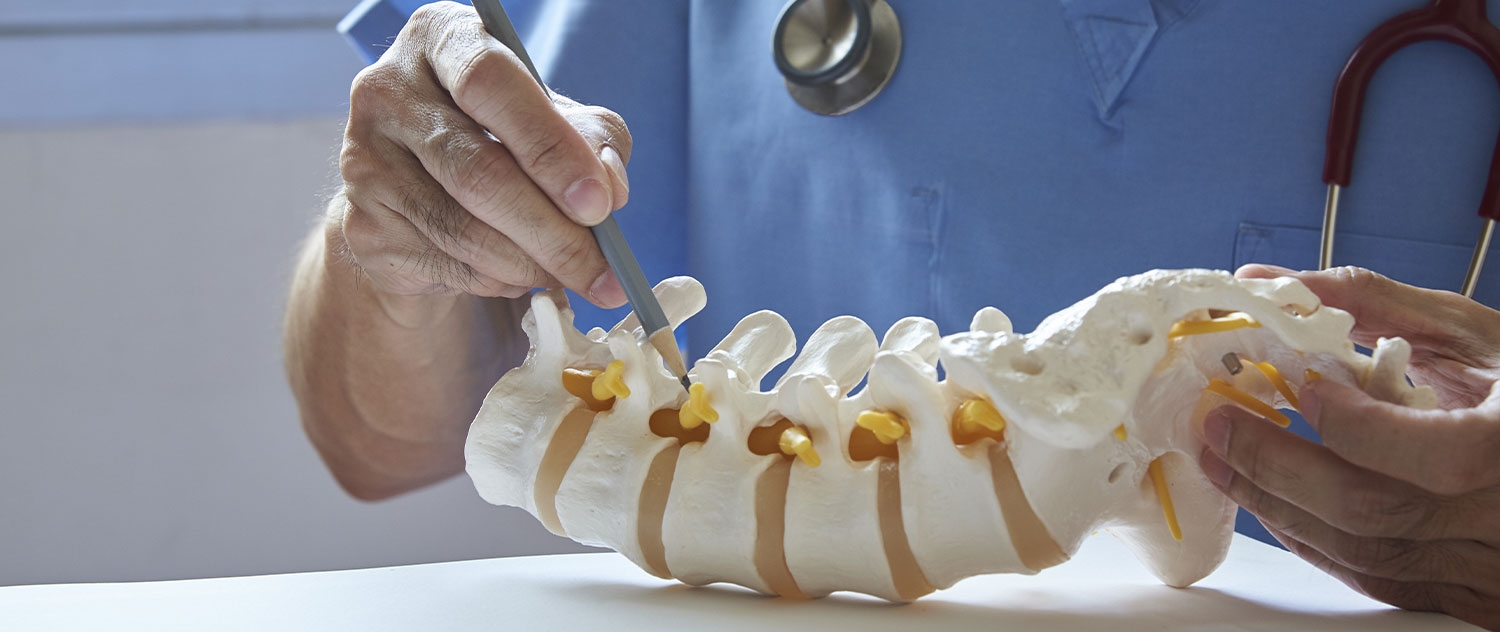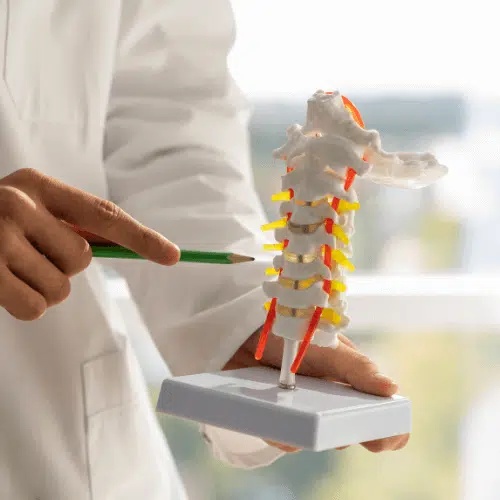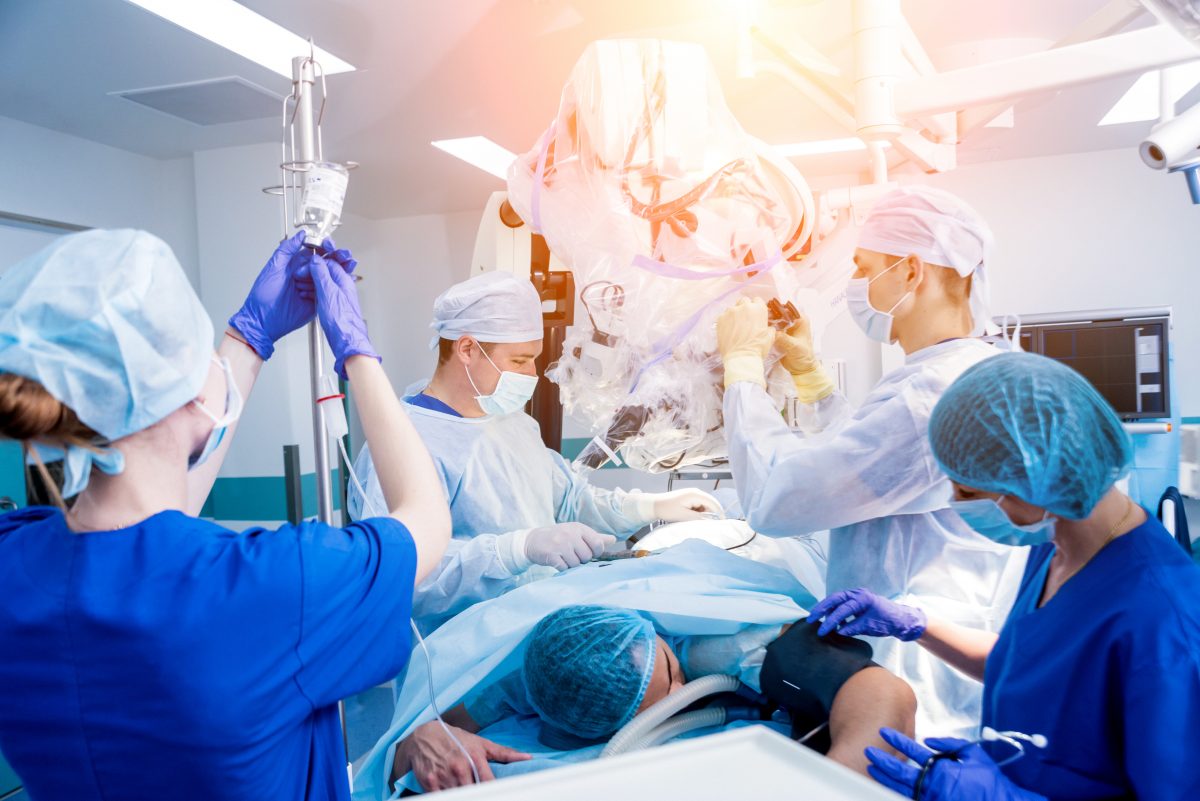The Most Up To Date Technologies by the Best Spine Surgeons in St Louis MO
The Most Up To Date Technologies by the Best Spine Surgeons in St Louis MO
Blog Article
An Introduction of Spine Conditions That Frequently Outcome in Surgical Therapies
Spine problems such as herniated discs, spinal stenosis, and degenerative disc illness frequently require surgical interventions when traditional therapies fall short to ease consistent symptoms. These conditions not only lead to significant discomfort but can also severely hinder everyday functioning and overall lifestyle. Recognizing the nuances of each condition and the equivalent surgical options, such as discectomy or spinal fusion, is essential for effective management. As we check out these conditions even more, it becomes noticeable that the decision-making process bordering medical treatment is complex and warrants careful consideration.
Herniated Discs
Although many people with herniated discs may locate relief via conventional treatments, surgery ends up being a necessary factor to consider when signs aggravate or continue - best spine surgeons in st louis mo. A herniated disc happens when the soft inner gel of a spinal disc extends through its external layer, possibly pressing nearby nerves and leading to discomfort, tingling, or weakness in the extremities
Conventional administration commonly includes physical treatment, discomfort medicines, and corticosteroid injections, which aim to reduce inflammation and improve feature. In situations where these approaches fail to ease devastating signs and symptoms, surgical choices might be discovered.
The most common operation for herniated discs is a discectomy, which includes the elimination of the herniated section of the disc to eliminate stress on the affected nerve root. In much more serious instances, spinal combination might be required to support the influenced vertebrae.
People are advised to talk about the prospective dangers and advantages of surgical treatment with their healthcare company to make a notified choice. Ultimately, the objective of any surgical intervention is to bring back function, reduce pain, and improve total lifestyle for individuals experiencing herniated discs.
Spine Constriction
Spinal stenosis occurs when the spaces within the spinal column slim, leading to enhanced stress on the spine cable and nerves. This problem can create in various regions of the back, consisting of the cervical and lumbar locations, typically because of age-related changes, such as degenerative disc condition, arthritis, or enlarging of tendons.
Patients with spinal stenosis might present with signs that include discomfort, pins and needles, tingling, or weak point, largely in the legs or arms. These symptoms can be intensified by activities that entail standing or walking, commonly leading individuals to seek alleviation via conservative therapies like physical therapy, drugs, or epidural steroid shots.
Nonetheless, when these non-surgical treatments fail to offer sufficient relief, surgical options might be taken into consideration. Typical surgical treatments for spine stenosis include laminectomy, which involves the removal of part of the vertebra to reduce stress, and spine fusion, which maintains the affected area. The choice to seek surgical procedure is usually based on the severity of signs, the level of useful disability, and the general health and wellness of the individual. Motivate diagnosis and monitoring are important to stop additional neurological compromise and boost lifestyle.
Spondylolisthesis
Spondylolisthesis occurs when one vertebra slips ahead over one more, leading to misalignment of the back. This problem can arise from numerous elements, consisting of hereditary issues, trauma, or degenerative modifications in the spinal column. It is most frequently observed in the back area, specifically at the L4-L5 and L5-S1 degrees.

Therapy options vary based upon the seriousness of the slippage and the signs and symptoms provided. Traditional steps, including physical therapy, discomfort administration, and activity alteration, are typically the initial line of defense. When non-surgical methods fail to alleviate symptoms or when considerable nerve compression is existing, surgical treatment might be required. Surgical alternatives can include spine fusion or decompression treatments, intended at recovering alignment and easing neurological symptoms. Early medical diagnosis and suitable monitoring are vital for optimum results in people with spondylolisthesis.
Degenerative Disc Illness

People with DDD often experience pain that may radiate to the legs or arms, relying on the affected region of the spine. The condition can be diagnosed with a combination of medical assessment, imaging research studies, and patient background. Treatment choices normally begin with traditional steps, including physical treatment, discomfort management, and way of life adjustments. Nonetheless, when these methods fail to give adequate alleviation, site surgical treatments may be considered.
Surgical alternatives for DDD may include back combination or synthetic disc substitute, targeted at stabilizing the influenced section and alleviating discomfort (best spine surgeons in st louis mo). Eventually, the choice of treatment is individualized, taking into consideration the seriousness of the problem, individual health, and lifestyle aspects
Spinal Growths

What variables contribute to the advancement of lumps within the back, and how do they manifest in people? Spinal tumors can occur from different variables, including hereditary proneness, ecological impacts, and pre-existing medical problems. They can be classified as key lumps, coming from the spine, check here or secondary tumors, which spread out from various other areas of the body. Individuals might provide with a variety of signs and symptoms, consisting of local discomfort, neurological deficiencies, weak point, or adjustments in bowel and bladder feature, depending on the tumor's dimension and place.
Medical diagnosis typically involves imaging studies such as MRI or CT scans, which aid delineate the lump's characteristics and impact on bordering frameworks. In examining treatment options, the lump's quality, location, and kind are critical factors to consider. Surgical treatment may be necessitated to ease signs, acquire a biopsy, or remove the growth entirely. The objective of surgery is frequently to decompress neural elements and support the spinal column. Adjuvant therapies, consisting of radiation or chemotherapy, might likewise be needed relying on the growth's nature. Early detection and treatment are essential for optimizing outcomes in people with spine lumps.
Conclusion
In recap, spinal column conditions such as herniated discs, spine constriction, spondylolisthesis, degenerative disc illness, and back lumps regularly require surgical treatment because of their possible to cause significant discomfort and functional disability. While traditional treatments may offer short-lived alleviation, surgical options end up being essential when signs linger or get worse. Timely diagnosis and treatment play an essential function in bring back feature and improving the top quality of life for affected individuals, underscoring the significance of detailed spine treatment.

Report this page